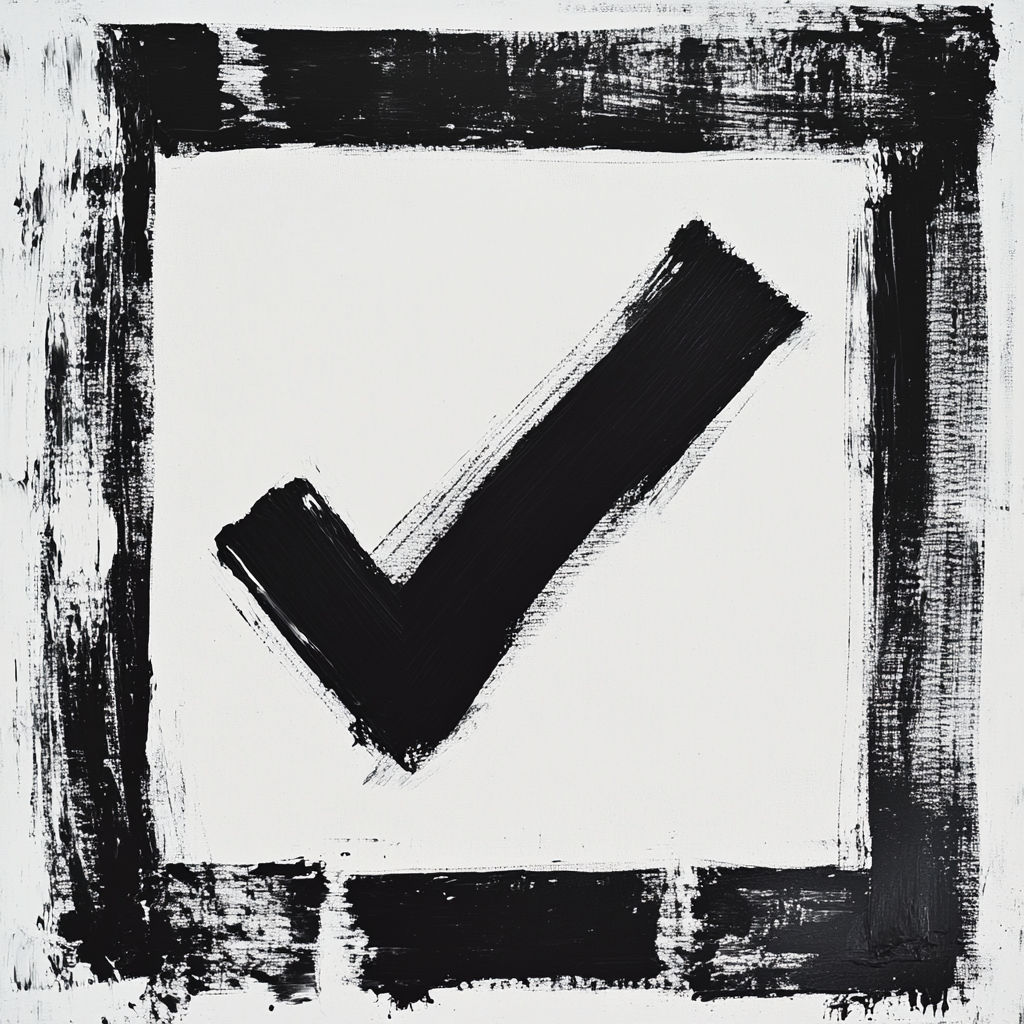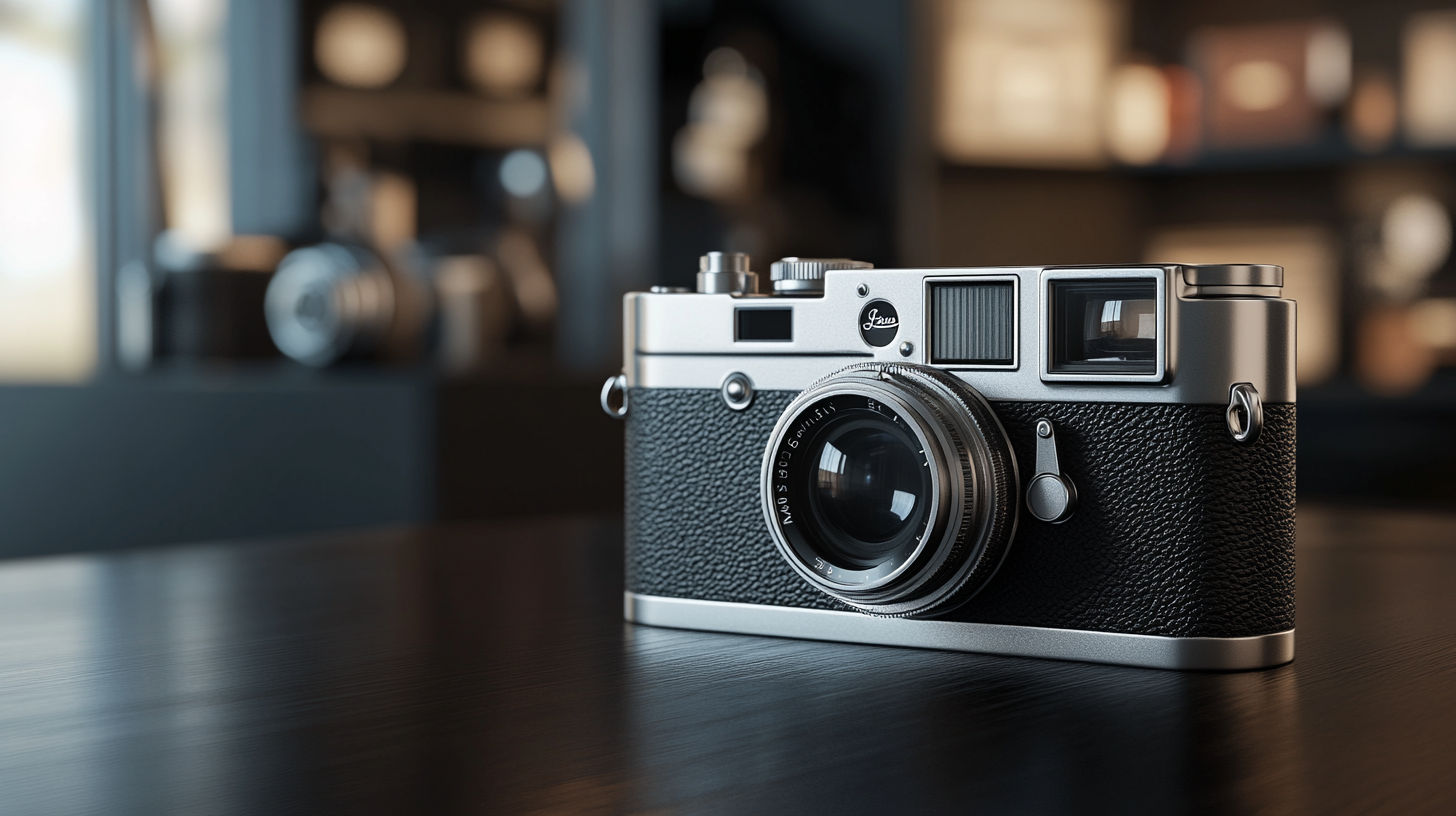
Introduction to Vintage Camera Values
Old cameras have become increasingly sought-after collectibles, with some rare models fetching thousands of dollars at auction. Whether you’ve inherited a camera collection, discovered an old camera in the attic, or are looking to start collecting vintage photography equipment, understanding what determines camera values is essential.
In this comprehensive guide, we’ll explore the factors that influence vintage camera values, identify the most valuable brands and models, and provide tools to help you determine what your old cameras might be worth. From iconic Leica rangefinders to classic Canon and Nikon SLRs, we’ll cover the cameras that collectors treasure and why they command the prices they do.
What Determines Vintage Camera Value?
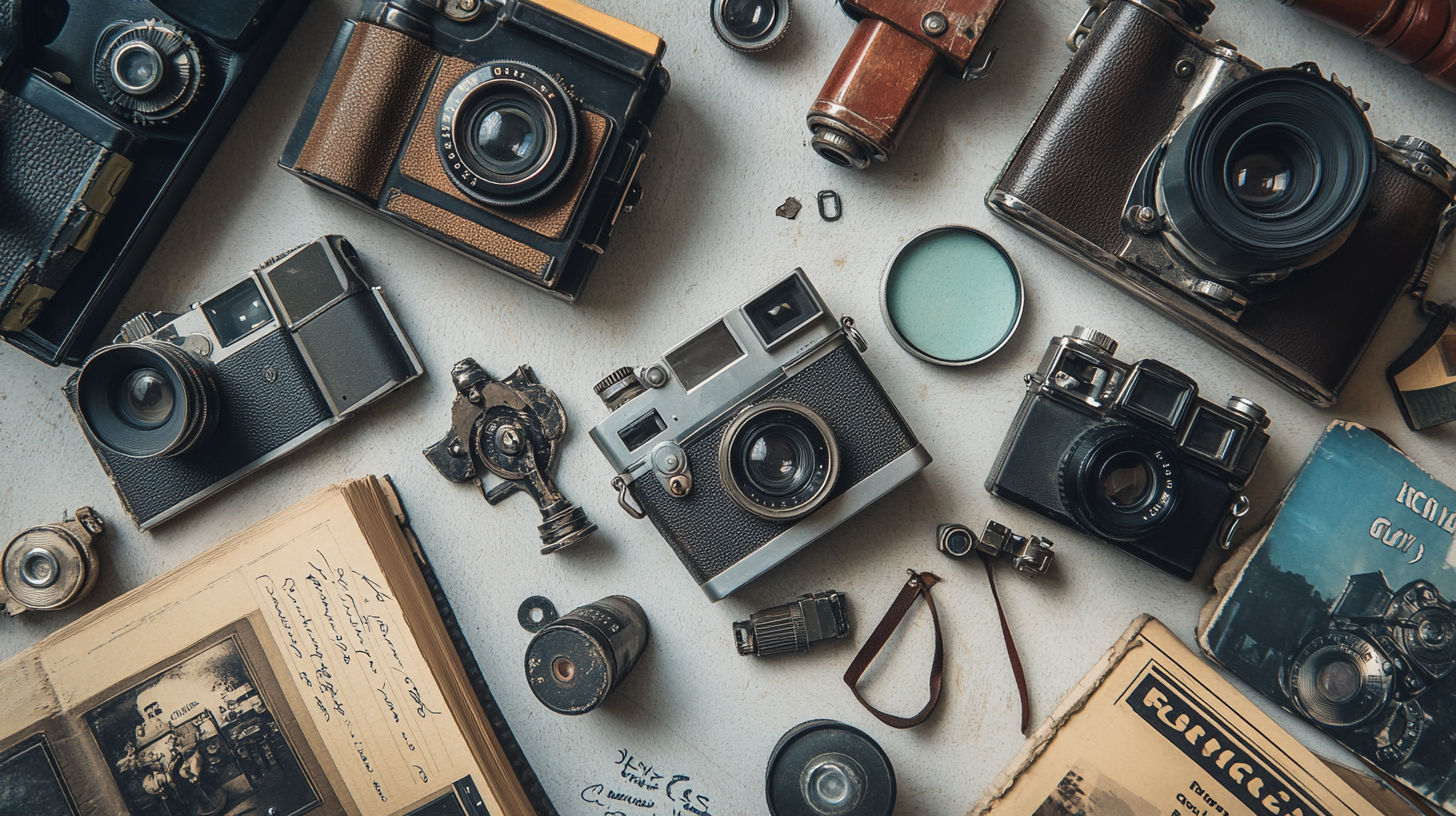
Brand and Model Significance
Not all old cameras are created equal when it comes to value. Certain manufacturers and specific camera models are consistently more valuable due to their historical significance, innovation, build quality, or cultural impact.
Premium brands that typically command higher values include:
- Leica - German-made Leica cameras, particularly M-series rangefinders, are among the most valuable vintage cameras on the market
- Hasselblad - Famous for their medium format quality and use in NASA space missions
- Rolleiflex - Classic twin-lens reflex cameras known for exceptional build quality
- Contax - Premium rangefinders and SLRs with Zeiss optics
- Nikon - Early Nikon rangefinders and professional F-series SLRs
- Canon - Particularly valuable models include early rangefinders and professional F-1 series
Most Valuable Camera Brands
Condition Assessment
Camera condition is perhaps the most significant factor affecting value. A camera in excellent working condition can be worth several times more than the same model in poor condition.
Camera Condition Rating Guide
Common condition ratings for vintage cameras include:
- Mint (95-100%): Like new, appears unused with all original packaging and accessories
- Excellent (85-94%): Shows minimal signs of use, fully functional, may have minor cosmetic imperfections
- Very Good (75-84%): Shows normal signs of use, fully functional, may have some cosmetic issues
- Good (65-74%): Functions properly but shows significant wear or minor issues
- Fair (50-64%): Functional but may need service, obvious signs of wear
- Poor (Below 50%): May function partially, significant cosmetic issues or damage
Rarity and Production Numbers
Limited production runs or rare variants of camera models can significantly increase value. For example:
- Black paint Leica models (vs. more common chrome)
- Military or special edition versions
- Prototype or pre-production models
- Cameras with famous previous owners or historical significance
Accessories and Completeness
Original accessories, packaging, and documentation can substantially increase a camera’s value:
- Original lens caps, hoods, and cases
- Factory instruction manuals
- Warranty cards and purchase receipts
- Original boxes and packaging
- Complementary accessories (flashes, filters, etc.)
A complete kit in original packaging can be worth significantly more than the camera body alone.
Most Valuable Vintage Camera Categories
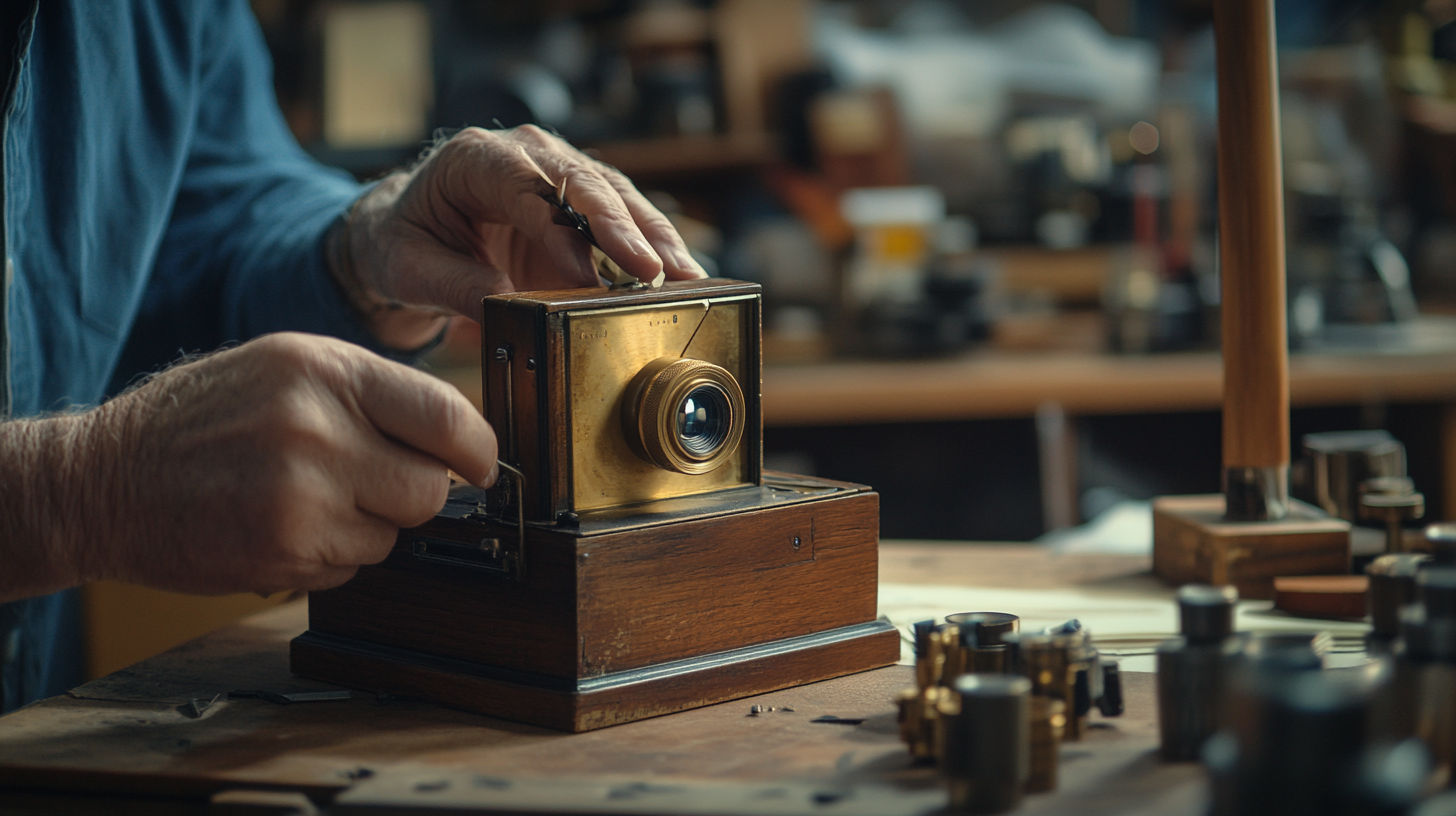
Leica Rangefinders
Leica cameras are often considered the pinnacle of vintage camera collecting. The German manufacturer has a long history of exceptional craftsmanship and innovation. Their rangefinder cameras are particularly prized:
- M3 (1954-1966): Often considered the definitive Leica rangefinder. Excellent examples typically range from $1,500-3,000, with rare black paint versions commanding $15,000+
- M2 (1957-1968): Slightly more affordable alternative to the M3, typically $1,200-2,500
- IIIg (1956-1960): The final and most refined screw-mount Leica, valued at $800-1,500
- 0-Series (1923-1924): Ultra-rare pre-production models that have sold for millions at auction
Premium Medium Format Cameras
Medium format cameras, which use larger film formats than 35mm, are highly sought after for their exceptional image quality:
- Hasselblad 500C/M: Iconic medium format SLR, $800-1,500 depending on condition
- Rolleiflex 2.8F: Premium twin-lens reflex camera, $800-2,000
- Mamiya 7: Rangefinder medium format camera, $1,500-3,000
- Contax 645: Modern medium format SLR system, $2,000-4,000
Professional 35mm SLRs
Professional single-lens reflex cameras from the film era continue to be valuable, especially early professional models:
- Nikon F (1959-1974): The first professional Nikon SLR, $300-800
- Nikon F2 (1971-1980): Professional workhorse, $200-500
- Canon F-1 (1971-1976): Canon’s first professional SLR, $200-500
- Olympus OM-1 (1972-1979): Compact professional SLR, $150-400
Rare and Unusual Cameras
Some cameras are valuable primarily due to their unusual design or extreme rarity:
- Leica Gun Rifle (1938): Camera designed to look like a rifle for sports photography, $300,000+
- Compass Camera (1937): Ultra-compact precision camera, $2,000-5,000
- Gami 16 (1950s): Subminiature spy camera, $500-1,500
- Konica Hexar AF Black Limited Edition: Rare variant of the popular rangefinder-style camera, $1,000-2,000
Vintage Camera Price Ranges
| Category | Price Range | Notes |
|---|---|---|
| Leica M3 Chrome | $1,500-$3,000 | Excellent condition, working meter |
| Leica M3 Black Paint | $15,000-$40,000 | Rare finish, collector grade |
| Hasselblad 500C/M | $800-$1,500 | With 80mm Planar lens |
| Rolleiflex 2.8F | $800-$2,000 | Clean lens, accurate meter |
| Nikon F Photomic | $200-$500 | Working condition |
| Canon AE-1 | $150-$300 | With 50mm lens |
| Olympus OM-1 | $150-$400 | Fully functional |
Note: Price ranges are approximate and can vary based on condition, rarity, and market demand.
How to Determine Your Old Camera's Value

Step 1: Identify Your Camera
Before you can determine value, you need to correctly identify what you have:
- Check manufacturer markings - Look for brand names like Leica, Canon, Nikon, etc.
- Find the model number - Usually engraved or printed on the camera body
- Note the serial number - Often found on the bottom or inside film compartment
- Document any special markings - Limited editions, commemorative text, etc.
For harder-to-identify cameras, sites like CollectiBlend offer extensive databases of vintage camera models with images for comparison.
Step 2: Research Market Values
Several resources can help you determine current market values:
- Online databases - CollectiBlend and similar sites provide price guides
- Completed auction listings - Check eBay’s sold listings for real-world sales
- Specialty forums - Camera collecting communities can offer appraisal help
- Price guides - Published books on camera collecting often include value estimates
Step 3: Assess Condition Thoroughly
Be honest and thorough when evaluating your camera’s condition:
- Operational testing - Check all mechanical functions (shutter, aperture, focus)
- Optical inspection - Examine lens elements for fungus, haze, scratches, or separation
- Cosmetic evaluation - Note any brassing, dents, dings, or leather deterioration
- Accessories inventory - Document all original accessories, cases, manuals, etc.
Step 4: Consider Getting a Professional Appraisal
For potentially valuable cameras, consider getting a professional opinion:
- Camera specialty shops - Stores specializing in vintage equipment often offer appraisals
- Auction houses - For rare or valuable items, major auction houses can provide estimates
- Online appraisal services - Submit photos and information for expert evaluation
Remember that condition is subjective, so having an expert opinion can be valuable, especially for high-end cameras.
Evolution of Camera Collecting Market
Early Collecting Period
Vintage cameras begin to be recognized as collectibles. Values remain relatively modest with primarily user interest.
Growing Interest
Collecting community expands. Japanese cameras gain collector interest alongside German classics. First dedicated price guides appear.
Market Maturation
Internet enables global market. Auction houses begin featuring vintage camera sales. Values for premium brands increase significantly.
Digital Transition
Digital photography causes massive sell-off of film equipment, initially depressing values. Specialized collectors emerge focused on particular brands/types.
Film Renaissance
Film photography revival drives renewed interest in working vintage cameras. User-collector market strengthens, pushing up values.
Premium Market Boom
High-end collectible cameras reach record prices at auction. Social media fuels interest in film photography and vintage aesthetics.
Cameras That Aren't Worth Much
Despite the excitement around vintage cameras, many common models have minimal monetary value. These typically include:
Basic Point-and-Shoot Film Cameras - Mass-produced models from the 1980s-2000s often sell for $5-20
Common Box Cameras - Basic Kodak Brownie cameras and similar simple box cameras typically range from $5-30 unless in mint condition with original packaging
110 and Disc Cameras - These compact format cameras from the 1970s-80s have very limited appeal, usually worth less than $20
Early Digital Cameras - First-generation digital cameras are typically obsolete rather than collectible, with values under $50 for most models
Department Store Brands - Rebranded cameras sold through catalogs or department stores generally lack collector interest
As Mike Eckman notes, “The reality is, old cameras are rarely worth much. Most are worth very little (less than $20), some are worth a little more than little ($20-$100).”
However, don’t discard old cameras without research - even among these categories, there are occasional rarities and exceptions that can have surprising value.
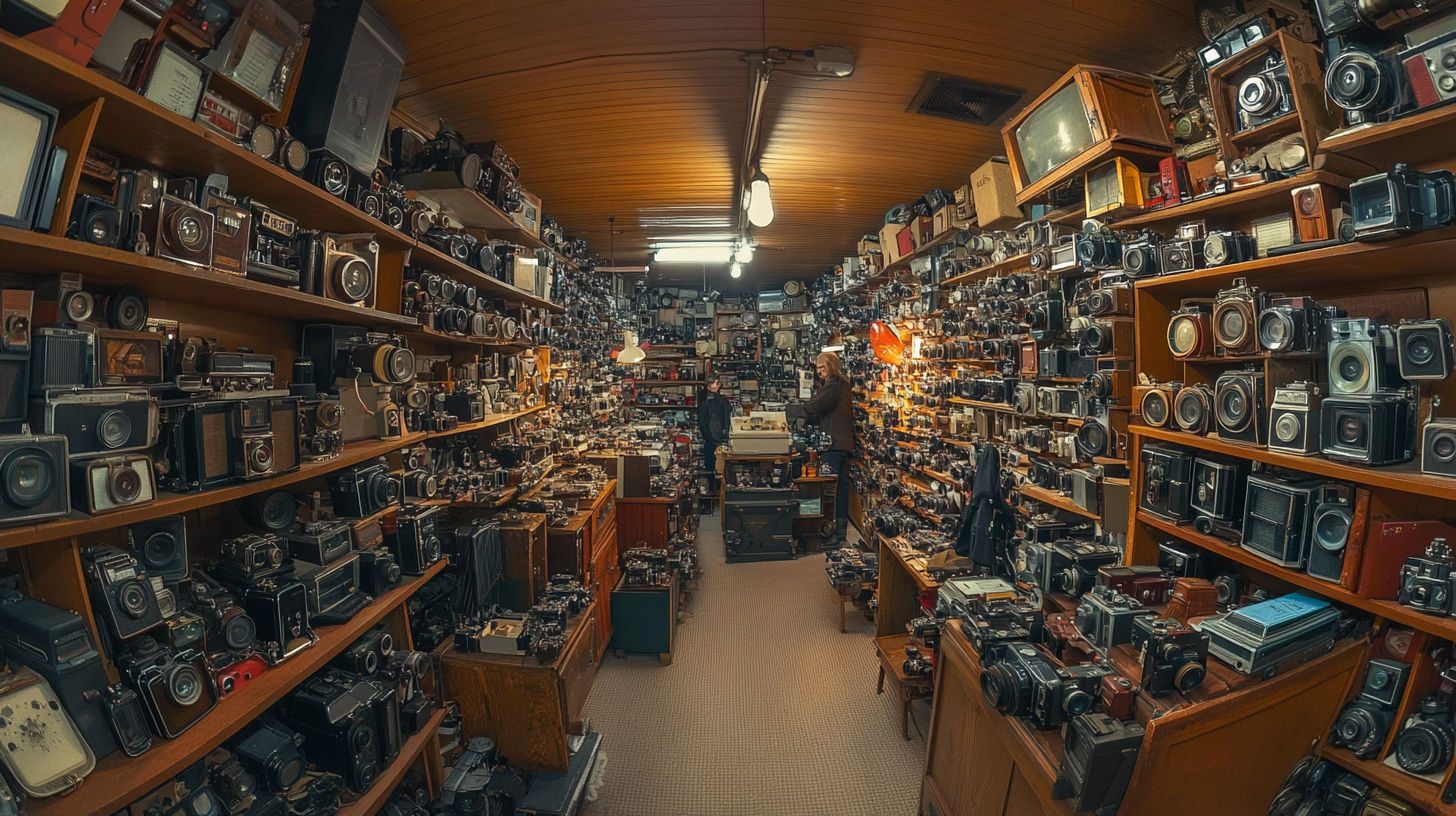
Where to Sell Vintage Cameras
Different selling venues are appropriate for different types and values of cameras:
Online Marketplaces
- eBay: The largest marketplace for vintage cameras, offering global reach but high competition
- Etsy: Good for collectible or decorative cameras
- Facebook Marketplace: Useful for local sales to avoid shipping valuable/fragile equipment
Specialty Camera Sites
- KEH Camera: Largest buyer of used camera equipment, offering immediate quotes
- B&H Photo Video: Purchases select vintage equipment
- Used Photo Pro (Roberts Camera): Specializes in buying and selling used photography gear
Auction Houses
For rare or exceptionally valuable cameras (typically $1,000+), consider specialty auction houses:
- Leitz Photographica Auction: Specializes in Leica and other premium camera brands
- Westlicht Auction: Major photography equipment auctions
- Christie’s and Sotheby’s: For historically significant or extremely valuable pieces
Physical Locations
- Camera specialty shops: Local photography stores often purchase vintage equipment
- Antique stores: Some may buy cameras or sell on consignment
- Camera shows and swap meets: Direct sales to other collectors
For the best results, match your selling venue to your camera’s value and target market. High-end collectible Leicas will fare better at specialty auctions, while common SLRs might sell more quickly on eBay or to a local shop.
Camera Market Statistics
Vintage Camera Lenses Value
Many photographers and collectors seek vintage lenses for their unique optical qualities and build characteristics. Factors that influence vintage lens values include:
Premium Lens Manufacturers
Some lens makers consistently command higher prices:
- Leica/Leitz: M-mount and screw-mount Leica lenses, particularly fast prime lenses
- Zeiss: Particularly Contax G and classic Zeiss lenses for Hasselblad
- Voigtländer: Classic lenses known for character and build quality
- Nikkor: Early Nikon lenses, especially pre-AI models
- Canon: Early rangefinder lenses and the “dream lens” 50mm f/0.95
Desirable Lens Characteristics
Certain lens features make them particularly valuable:
- Fast maximum apertures: f/2 or wider lenses typically command higher prices
- Unique rendering: Lenses known for distinctive bokeh or image character
- Rare focal lengths: Uncommon wide-angle or telephoto options
- Special elements: Early aspherical lenses or those with special optical formulations
Adaptability to Modern Cameras
A major factor driving vintage lens values is their adaptability to modern digital cameras:
- M-mount Leica lenses: Easily adaptable to mirrorless systems
- Canon FD, Nikon F, Pentax K: Common mounts with readily available adapters
- Medium format lenses: Hasselblad, Mamiya, and Pentax 645 lenses adaptable to digital systems
According to Josh Weiss Photography, “Old camera lenses can be valuable, with some vintage lenses worth thousands due to their unique quality and results.”
Valuable Vintage Lens Examples
| Category | Price Range | Notes |
|---|---|---|
| Leica Noctilux 50mm f/1.0 | $5,000-$8,000 | Legendary ultra-fast Leica lens |
| Canon 50mm f/0.95 Dream Lens | $3,000-$5,000 | Ultra-fast rangefinder lens |
| Zeiss Planar 80mm f/2.8 (Hasselblad) | $500-$900 | Classic medium format lens |
| Nikon AI-S 58mm f/1.2 Noct | $2,000-$4,000 | Rare low-light specialized lens |
| Leica Summicron 35mm f/2 | $1,500-$3,000 | Premium M-mount lens |
Note: Price ranges are approximate and can vary based on condition, rarity, and market demand.
Common Questions About Old Camera Values
Frequently Asked Questions
How do I check my old camera's value?
To determine your old camera's value:
1. Identify the exact make, model, and version
2. Research current market prices on sites like CollectiBlend or eBay sold listings
3. Assess the condition honestly (operation, optics, cosmetics)
4. Check if you have original accessories, boxes, or manuals (these increase value)
5. For potentially valuable cameras, consider a professional appraisal
Remember that prices can vary significantly based on condition, so be thorough in your assessment.
Are old camera lenses worth anything?
Yes, vintage lenses can be quite valuable—sometimes more than camera bodies. Their value depends on:
- Brand and optical quality (Leica, Zeiss, and premium Nikkor lenses command highest prices)
- Rarity and desirability (fast apertures like f/1.4 or wider are more valuable)
- Condition (especially optical clarity—fungus, haze, or scratches significantly reduce value)
- Adaptability to modern digital cameras (lenses that can be used on current mirrorless cameras have added value)
Some premium vintage lenses sell for thousands of dollars, especially those from Leica, early Nikon, and specialty lenses with unique characteristics.
What are the most valuable vintage cameras?
The most valuable vintage cameras typically include:
1. Leica limited editions and early models (especially black paint versions)
2. Rare Hasselblad models (particularly those used in space missions)
3. Early Nikon rangefinders and S-series cameras
4. Limited production models from any major manufacturer
5. Prototype or pre-production cameras
6. Cameras with historical significance or celebrity ownership
The rarest vintage cameras have sold for hundreds of thousands or even millions at auction. For example, a Leica 0-Series prototype from 1923 sold for €14.4 million (about $15.1 million) at auction in 2022, making it the most expensive camera ever sold.
Are old Canon cameras worth anything?
Old Canon cameras can certainly have value, though it varies significantly by model and era:
- Canon rangefinders from the 1950s-60s are quite collectible ($200-1,000+)
- The Canon F-1 professional SLR system (1971-1981) typically sells for $200-500
- Canon AE-1 and AE-1 Program are popular starter film cameras ($100-250)
- Early Canon EOS film bodies generally have modest value ($50-150)
- Very early Canon digital cameras have minimal value except to specialized collectors
The most valuable Canon cameras are their early rangefinders (particularly the Canon VI-L and similar) and rare variations of their professional F-series SLRs. Limited editions, special finishes, and commemorative models can also command premium prices.
Where can I sell my old cameras?
Several options exist for selling vintage cameras:
1. **Online marketplaces**: eBay, Etsy, Facebook Marketplace
2. **Camera specialty retailers**: KEH Camera, B&H Photo Used Department, Roberts Camera
3. **Camera collectors forums**: Fred Miranda, Photo.net classifieds
4. **Local camera shops**: Many independent photo stores buy used equipment
5. **Auction houses**: For rare or valuable items, specialty auction houses like Leitz Photographica Auction
6. **Camera shows and swap meets**: Direct sales to other collectors
For the best results, research values before selling and choose a venue appropriate for your camera's value. Higher-end collectibles often do better at specialty retailers or auctions, while common models may sell more quickly through eBay or local shops.
How can I tell if my old camera is rare or valuable?
Several indicators can suggest your camera might be rare or valuable:
1. Premium manufacturer (Leica, Hasselblad, early Nikon)
2. Limited production models or special editions
3. Unusual features or design elements
4. Black paint finish on typically chrome cameras
5. Military markings or engravings
6. Very early serial numbers
7. Complete with original accessories and packaging
If your camera has any of these characteristics, it's worth researching further. Check collector sites like CollectiBlend, auction archives, or consult with a vintage camera specialist. Even "common" cameras can have rare variations that command significant premiums.
Do old Polaroid cameras have any value?
Most common Polaroid cameras have modest value, typically ranging from $20-100, with a few notable exceptions:
- The original SX-70 folding model in excellent condition can sell for $150-300
- Professional Polaroid models like the 600SE or 110B can reach $300-800
- Rare artist editions or special models (like the SLR 680) can command $300-500
- Most 600-series and OneStep cameras typically sell for $30-80 if working
The key factor with Polaroid cameras is functionality, as these complex cameras often develop issues with age. Working cameras command significantly higher prices, especially since compatible film is available again through the Polaroid Originals (now simply Polaroid) company.
Does having the original box and manual increase camera value?
Yes, original packaging, manuals, and accessories significantly increase a vintage camera's value—often by 25-50% or more for rare items. Here's why:
1. **Completeness**: Collectors value complete sets and original presentation
2. **Condition verification**: Original boxes suggest more careful storage
3. **Authenticity**: Original materials help confirm authenticity
4. **Historical documentation**: Original price tags, warranty cards, and receipts add historical context
The value increase is most dramatic for high-end collectible cameras, where original boxes and documentation might add hundreds or even thousands of dollars to the value. Even for more common cameras, original packaging can make the difference between a quick sale and a camera that sits unsold.
Resources for Vintage Camera Valuation
Helpful External Resources
CollectiBlend Camera Price Guide
Comprehensive database of vintage camera models with current market values, historical data, and search functionality to identify and research vintage cameras.
How to Estimate the Value of Old Film Cameras
Detailed guide on researching and determining the value of vintage film cameras, with practical advice on condition assessment and market research.
eBay Sold Listings
Current marketplace for vintage cameras with the ability to view recently sold items for realistic price comparisons.
Old Cameras Worth Money
Guide to identifying valuable vintage cameras with information on desirable models and factors that increase value.
Mike Eckman's Camera Value Guide
Realistic assessment of vintage camera values with practical advice on determining what your old cameras might be worth.
KEH Camera Buying Process
Professional camera buyer offering online quotes and purchasing services for vintage camera equipment.
Conclusion: Understanding the Vintage Camera Market
The world of vintage camera collecting continues to evolve, with some segments of the market seeing significant appreciation while others remain affordable entry points for new collectors. Premium brands like Leica, Hasselblad, and early Nikon continue to command high prices, especially for rare or excellent condition examples.
When evaluating old cameras, remember that condition, completeness, and rarity are the primary drivers of value. A common camera in exceptional condition with all original packaging might be worth more than a rarer model in poor condition. Research thoroughly, be honest about condition, and consult multiple sources to get the most accurate picture of your camera’s value.
Whether you’re looking to sell inherited equipment, build a collection, or simply appreciate the craftsmanship of classic cameras, understanding the market dynamics and value factors will help you make informed decisions.
For rare or potentially valuable cameras, consider seeking professional appraisal services or consult with specialty dealers who can provide expert insights into your specific equipment. The value of vintage cameras isn’t just in their monetary worth but also in their historical significance and the quality of engineering they represent from a bygone era of mechanical precision.
